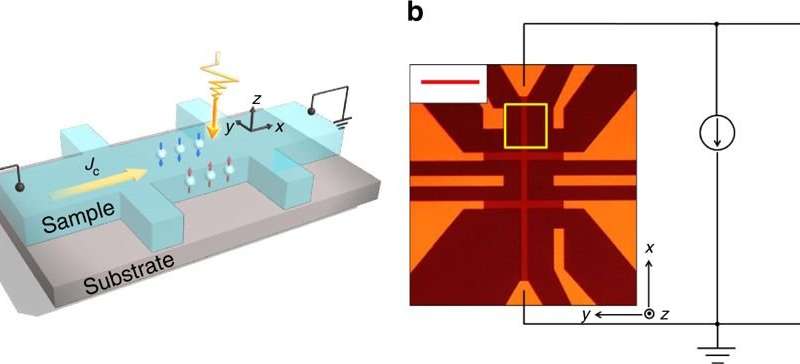
With companies like Google, Microsoft and IBM all racing to create the world’s first practical quantum computer, scientists worldwide are exploring the potential materials that could be used to build them. Now, Associate Professor Yang Hyunsoo and his team from the Department of Electrical and Computer Engineering at the National University of Singapore (NUS) Faculty of Engineering have demonstrated a new method which could be used to bring quantum computing closer to reality.
“The NUS team, together with our collaborators from Rutgers, the State University of New Jersey in the United States and RMIT University in Australia, showed a practical way to observe and examine the quantum effects of electrons in topological insulators and heavy metals which could later pave the way for the development of advanced quantum computing components and devices,” explained Assoc Prof Yang.
The findings of the study were published in the scientific journal Nature Communications in June 2018.
The advantage of quantum computers
Quantum computers are still in the early stages of development but are already displaying computing speeds millions of times faster than traditional technologies. As such, it is predicted that when quantum computing becomes more readily available, it will be able to answer some of the world’s toughest questions in everything from finance to physics. This remarkable processing power is made possible by the radical way that quantum computers operate—using light rather than electricity.
Classical computers use electrons to code information into binary states of ones and zeros. In contrast, quantum computers use laser light to interact with electrons in materials to measure the phenomenon of electron “spin.” These spinning electron states replace the ones and zeros used as the basis for traditional computers, and because they can exist in many spin states simultaneously, more complex computing can be performed.
However, harnessing information based on the interactions of light and electrons is easier said than done. These interactions are incredibly complex, and like anything in the quantum world, there is a degree of uncertainty when trying to predict behaviour. As such, a reliable and practical way to observe these quantum effects has been sought after in recent research.
The real breakthrough from the scientists at NUS was the ability to “see” for the first time particular spin phenomena in topological insulators and metals using a scanning photovoltage microscope. Topological insulators are electronic materials that are insulating in their interior but support conducting states on their surface, thus enabling electrons to flow along the surface of the material.
Associate Professor Yang and his team examined platinum metal as well as topological insulators Bi2Se3 and BiSbTeSe2. An applied electrical current influenced the electron spin at the quantum level for all of these materials and the scientists were able to directly visualise this change using polarised light from the microscope.
Additionally, unlike other observational techniques, the innovative experimental setup meant that the results could be gathered at room temperature, making this a practical method of visualisation which is applicable to many other materials. Mr Liu Yang, who is a Ph.D. student with the department and first author of the study, said, “Our method can be used as a powerful and universal tool to detect the spin accumulations in various materials systems. This means that developing better devices for quantum computers will become easier now that these phenomena can be directly observed in this way.”
Associate Professor Yang and his team are planning to test their new method on more novel materials with novel spin properties. The team hopes to work with industry partners to further explore the various applications of this unique technique, with a focus on developing the devices used in future quantum computers.

